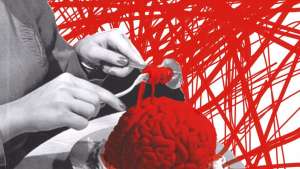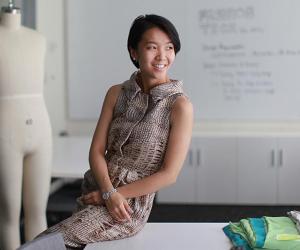From the Series
Designer Grace Jun talks us through how she created accessible and comfortable fashion for people who live with disabilities.
Before she took the stage of the Design Indaba Conference 2017, we sat down with the Parsons School of Design lecturer to learn more about her work in the field of wearable technology and widening the fashion scope for those with physical impairments.
Jun has a hands-on approach to research and development when it comes to creating unique garments tailored for people with diverse abilities. According to her, remote observation and computerised research are simply not good enough. One has to engage with people, see how their daily lives play out and get a real sense of their bodily behaviour before the question of creating more accommodating attire for them can be addressed.
“How does someone in a wheelchair get coffee in the morning?,” asks Jun, “How does someone with autism navigate their home? How do they interact with their caretaker or other people? You need to look at how they are behaving. It’s very organic.”
She believes that human interaction, in tandem with analysis and data, yields the best kind of design solutions. In her work, it meant shadowing each of her case study individuals for a day to better understand how their clothing can be improved.
As a designer who is an explorer and proponent of the intersection between fashion design and technology, Jun has an insightful perspective on the rising popularity of personal gadgets for the body. From the interactive gestures we use to operate touch screens to computer chips implanted under the skin, Jun has observed the close relationships we form with technology. Though not worried by the increase itself, Jun does encourage us to question whether the rise of “cutting edge” health tracking tech is born of a human need or more superficial desires.
“Do you really need 500 sensors on your wristwatch to tell you about your blood pressure?” says Jun, “Or can it be used in a different way to shift opinions about the way we look at the body – especially for people with diverse abilities.”










